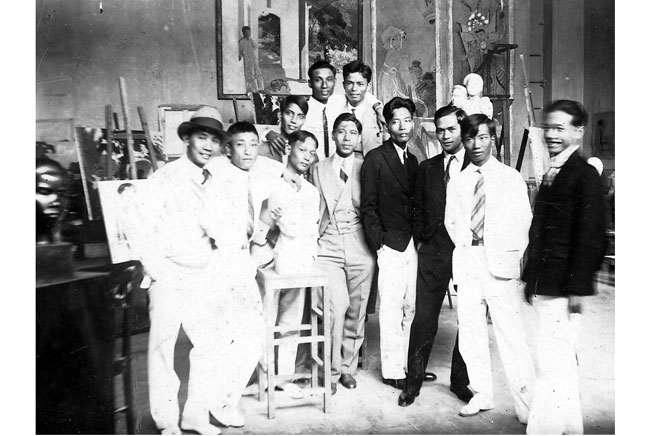When the French moved in, they also introduced their arts to the Vietnamese. As one of the art centers of Europe, they also thought it prudent to set up art schools in Vietnam as well. The Ecole des Beaux-Arts de l’Indochine in Hanoi was one of the main art schools established during the early 20th century. Oil painting being one of the main skills taught, this was something completely new to the Vietnamese in this fashion. It wasn’t long before the shift of art for functionality and art for pleasure began to take place. They even taught the students the tradition of painting en plein air, or taking your easel out into nature and painting the landscape before you. Through all these changes, certain ancient art forms remained, like lacquer painting and silk painting.
The decades of war changed how artists worked. Many used art as a way of dealing with it, utilizing modern realism as their basis. Some made their living painting propaganda posters and the like. Some artists of note include To Ngoc Van (known for resistance art), Nguyen Gia Tri (known for lacquer painting), Nguyen Phan Chan (known for blending calligraphy styles with brush painting), Nguyen Sang (oil painter and lacquer painter), Nam Son (known for national art), and Ta Ty (painter and poet).
 |
| Lacquer painting of Nguyen Gia Tri |
The vast majority of literature is written in Vietnamese, although there are some French- and English-language works included. The earliest works were written using Chinese characters, known as chu nom. As Portuguese Jesuits moved into the area, they created the quoc ngu script in 1631, which is the Latin-based script we see today with sets of diacritical marks to represent the tones and sounds of the Vietnamese language. However, it wasn’t consistently used (except by missionaries) until the 20th century when French Indochina established its use.
 |
| The story of Son Tinh and Thuy Tinh |
There was also a strong history of folk literature, where some of the stories were passed down from generation to generation. Thankfully, many of these were also written down. Many of these stories were myths about magical creatures, ancient life, or heroes like Son Tinh (The Mountain Spirit) and Thuy Tinh (The Water Spirit), with multiple versions of stories. Many of the poems and accounts written in Classical Chinese have to be transcribed and translated into Modern Vietnamese for anyone to understand them. But there are a couple poems that have stood the test of time: Nguyen Du’s poem “The Tale of Kieu” (Truyen Kieu) and Doan Thi Diem’s translation of the Classical Chinese poem “Chinh Phu Ngam Khuc.”
 |
| Also under the English title of Dumb Luck |
After Vietnam declared its independence from France in 1945, the government continued to push the use of the chu quoc ngu script, which turned out to be key in raising the literacy rate in the country and standardizing spelling and grammar. However, the first novels and literary works began to be pushed in the early 20th century, including the first history text to be published using the new script: Viet Nam su luoc by Tran Trong Kim (1921). One of the first novels was called So Do by Vu Trong Phung (1936). This novel was a satire on the Vietnamese middle class during the late colonial period; it was unsurprisingly banned by the North Vietnamese communist government. This is an excellent list of contemporary (mostly) Vietnamese authors recommended by Vietnamese authors if you’re looking for something new to read (and I think there are some English-language translations of these available too).
Up next: music and dance


No comments:
Post a Comment